Lemke, 1941
‘Silver King’, S. vulgaris
Lemke 1941; S III
Wister, Lilacs for America, 58 [1942], 41 [1953]; Vrugtman, Lilacs – Proceedings 12(1):21 [1983]; Lilacs – Quart. Jour. 24(1): front cover ill. [1995]; Chapman, Lilacs – Quart. Jour. 31(2):35-36 & front cover ill. [2002]; Holetich, Lilacs – Quart. Jour. 31(4):89 & back cover ill. [2002]; Photo on Jorgovani/Lilacs 2015 DVD.
cultivar name presumed registered 1953; name established and accepted.
Международный регистр названий культиваров рода Syringa L.
More about His Majesty the ‘Silver King’
Prompted by Colin Chapman’s article in the Spring 2002 issue of Lilacs, about Syringa vulgaris ‘Silver King’, I took upon myself to visit the original (paternal) plant he wrote about.
I concur that the portion of a floret may have an occasional “sparkle” of gold but only on a bright, sunny day when a direct sunlight is bathing it and the observer’s eye is able to view the inner details of a floret. The silver colour, however, I could observe in the central area if the floret, where the petals meet the tube, on a sunny and equally on a cloudy day, so I trust Dr. Lemke was guided by this impression to name the cultivar ‘Silver King’.
More about His Majesty the ‘Silver King’
Prompted by Colin Chapman’s article in the Spring 2002 issue of Lilacs, about Syringa vulgaris ‘Silver King’, I took upon myself to visit the original (paternal) plant he wrote about.
I concur that the portion of a floret may have an occasional “sparkle” of gold but only on a bright, sunny day when a direct sunlight is bathing it and the observer’s eye is able to view the inner details of a floret. The silver colour, however, I could observe in the central area if the floret, where the petals meet the tube, on a sunny and equally on a cloudy day, so I trust Dr. Lemke was guided by this impression to name the cultivar ‘Silver King’.
My photographs unfortunately don’t properly support my description which proves that an eye is a more intricate and complex instrument than a camera. Since propagating material for Colin’s plant was taken from this singular specimen at RBG, their comparative observation may be of interest. since soils and climatic conltions at RBG and Wyverstone – Stowmarket England are very different. The plant at RBG is growing on top of an Eastern exposure slope, in partial shade of an ash tree (Fraxinus americana) nearby. Soil, other than addition to the planting hole at planting time is poor and has tendency to dry quickly. The plant alternates the amount of blossom biannually, but in both instances the inflorescence are born on the upper half of the plant. This most likely is a genetic trait rather than shortage of sunshine hours caused by a nearby tree.
As buds open, the petals display its rosy colour which within a day or two change into creamy-silvery white. This silvery colour is retained longer in 5-6 mm central portion of the floret and can be seen only at close observation.
Since lilacs have tendencies to transform their appearance of colour day by day, and varies with sunshine angle it is observed, I suggest that when a lilac draws your attention from a distance you should observe it also from a close-up distance, first as a complete inflorescence and then as a floret. Pluck out one floret and observe it from a different angle, under different light conditions and on different days of its development. You will notice an intricate formation of a unique beauty in “hidden corners” of a part or a whole and may be surprised to the point to wish to stop the clock and make “the beauty” last forever. Each time you experience the impact of visual beauty mixed with personal feelings write it on a paper and share it with others. The heavens, I am told, have no seasons. It has a collection of beauty which is everlasting and changes occur only in our visual perception as we move from one object (cultivar) to the next. That means the cross-hybridization will continue to infinity.
Charles Holetich
Статья из журнала Lilacs – Quarterly Journal 31(4) 2002

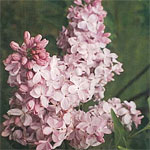
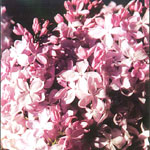
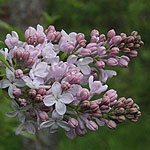
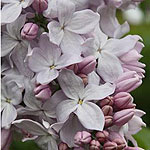
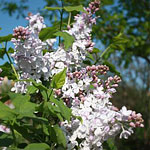
Оставить комментарий
Пожалуйста, зарегистрируйтесь, чтобы иметь возможность оставлять комментарии.